A jungle safari in Nepal offers an incredible opportunity to explore the country’s rich biodiversity, diverse landscapes, and abundant wildlife. Home to some of the best national parks in Nepal, including Chitwan National Park, Bardia National Park, and Shuklaphanta National Park, Nepal provides thrilling encounters with one-horned rhinos, Bengal tigers, wild elephants, and exotic bird species. Travelers can experience a Nepal wildlife safari through jeep safaris, elephant safaris, and boat rides, making it one of the top places to go on wildlife safaris in Nepal. Whether spotting rare birds in a Koshi Tappu Wildlife Reserve safari, exploring the remote wilderness of Parsa Wildlife Reserve safari, or capturing stunning images through wildlife photography in Nepal, every moment in the jungle is unforgettable. The best time for a jungle safari in Nepal is between October and March, when the weather is pleasant and wildlife sightings are frequent. Nepal safari tour packages cater to both adventure seekers and nature lovers, offering wildlife tours in Nepal that highlight the country's incredible biodiversity while promoting Nepalese ecotourism and safaris.
At Druk Holidays, we offer the best jungle safari in Nepal, ensuring an unforgettable adventure through the country’s most stunning wildlife reserves. Our expertly crafted Nepal safari tour packages take you deep into the heart of Chitwan National Park, Bardia National Park, and other top destinations, where you can witness one-horned rhinos, Bengal tigers, wild elephants, and exotic bird species in their natural habitat. Whether you seek an exhilarating tiger safari in Nepal, a peaceful Koshi Tappu Wildlife Reserve safari, or an exclusive elephant safari in Nepal, our team guarantees a seamless and immersive experience. As a leading provider of wildlife tours in Nepal, we prioritize safety, comfort, and expert guidance to make every journey exceptional. The best time for a jungle safari in Nepal is from October to March, and we ensure that every trip aligns with the prime season for wildlife sightings. With a strong commitment to Nepalese ecotourism and safaris, Druk Holidays delivers unmatched expertise, professional guides, and tailor-made itineraries, making us the top choice for exploring the best national parks in Nepal.
Parsa Wildlife Reserve
Located in the southern part of Nepal, Parsa Wildlife Reserve is a hidden gem for wildlife enthusiasts. Spanning over 1,000 square kilometers, it is home to diverse ecosystems, including dense forests, grasslands, and riverine areas. The reserve is rich in biodiversity, offering a quieter and more secluded alternative to the more crowded parks. Visitors here can enjoy exhilarating safaris and wildlife spotting in a peaceful environment.
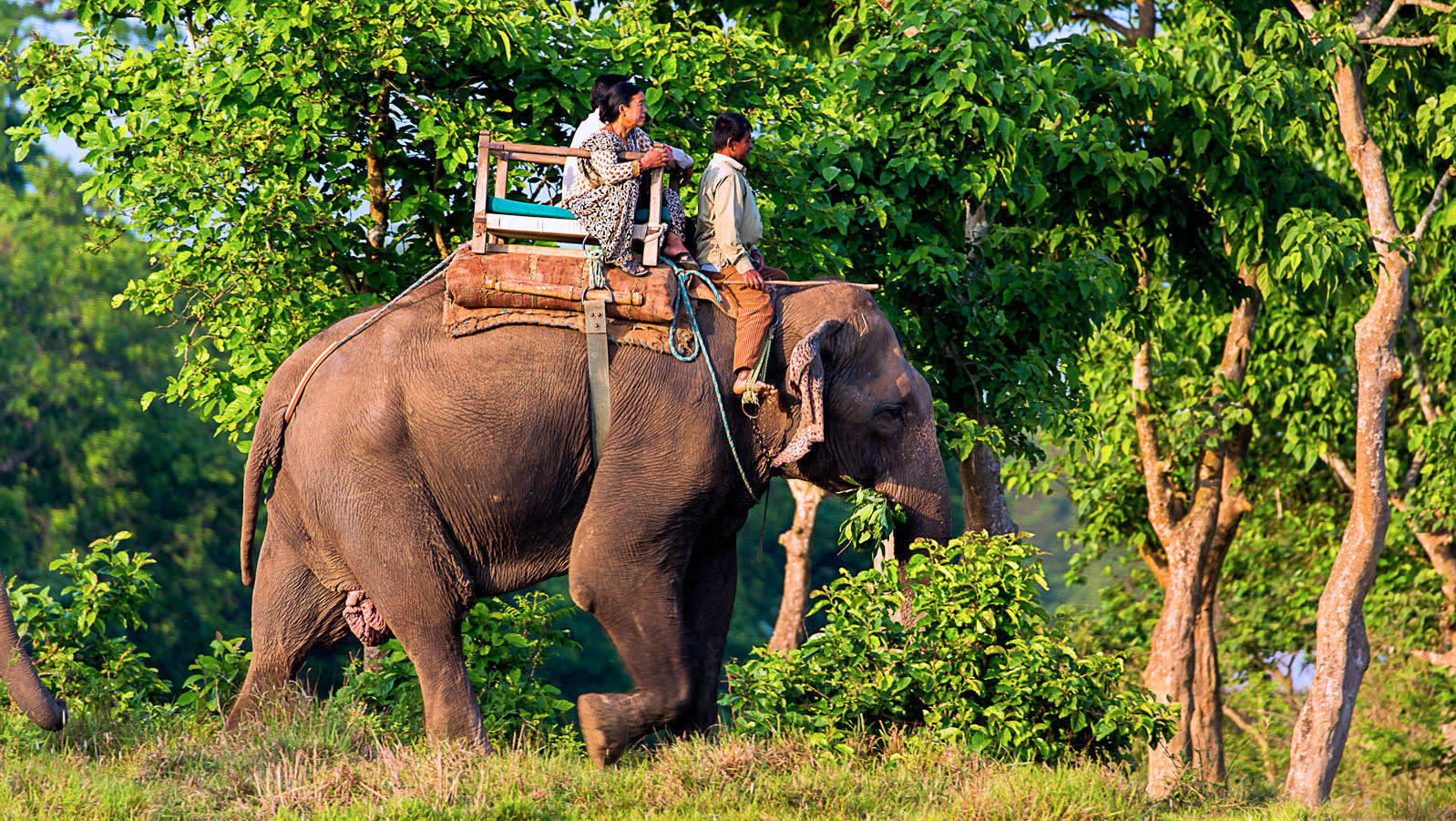
- Rich Biodiversity: Parsa is home to a wide variety of species, including Bengal tigers, leopards, sloth bears, and wild elephants. This makes it an ideal destination for wildlife lovers.
- Scenic Forests and Grasslands: The diverse landscape of dense tropical forests and open grasslands offers stunning views and a variety of habitats for wildlife to thrive in.
- Jeep Safari Experience: Explore the vast expanse of the reserve on a thrilling jeep safari, where you can spot rare animals in their natural habitat. The safaris are guided by expert naturalists, ensuring an enriching experience.
- Elephant Safari: An elephant safari through Parsa's dense forests offers a unique perspective of the wildlife and a chance to observe animals up close in their natural surroundings.
- Birdwatching Opportunities: The reserve is home to over 300 bird species, making it a perfect location for birdwatching enthusiasts. Expect to spot rare species, including migratory birds during certain seasons.
- Jungle Walks and Nature Trails: For a more immersive experience, enjoy a guided jungle walk that takes you deeper into the forest, allowing you to observe the local flora and fauna up close.
- Tiger Spotting: Parsa is a known habitat for Bengal tigers, and while sightings are rare, the reserve offers a higher chance of encountering these majestic animals compared to other parks.
- Riverine Ecosystem: The Koshi River flows through the reserve, creating an important water source for the animals. Visitors can enjoy peaceful boat rides along the river, where they may spot crocodiles and water buffalo.
- Secluded and Less Crowded: Unlike the more popular parks like Chitwan, Parsa remains relatively undisturbed by large tourist crowds, offering a more peaceful and private safari experience.
- Perfect for Photography: The reserve offers excellent opportunities for wildlife photography, especially for those looking to capture stunning shots of elephants, tigers, and other wildlife in their natural surroundings.
Parsa Wildlife Reserve offers an exceptional, tranquil wildlife experience, making it a perfect destination for those looking to explore Nepal’s natural beauty away from the crowds. From thrilling safaris to peaceful birdwatching, it provides ample opportunities to discover the rich flora and fauna of this remarkable reserve. Whether you're a seasoned adventurer or a nature lover, Parsa is sure to leave a lasting impression.
Koshi Tappu Wildlife Reserve
Situated in the eastern region of Nepal, Koshi Tappu Wildlife Reserve is a hidden paradise for nature lovers and wildlife enthusiasts. Known for its serene wetlands, it is an important habitat for a wide variety of species, especially birds. The reserve is one of the best locations for birdwatching in Nepal, offering a tranquil and unique experience. Covering an area of 175 square kilometers, it is also home to the endangered wild water buffalo (Arna), making it a significant ecological site in Nepal.
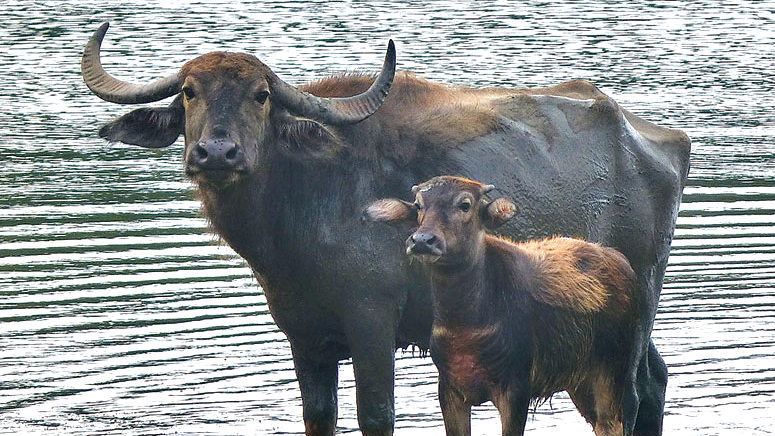
- Birdwatching Paradise: Koshi Tappu is renowned for its birdlife, hosting over 500 species of birds, including migratory species from Siberia. It is considered a birdwatcher's haven.
- Wild Water Buffalo (Arna): The wild water buffalo is one of the rare and endangered species found here. It is a primary attraction in the reserve, offering unique wildlife spotting opportunities.
- Wetland Ecosystem: The reserve’s wetland environment supports a variety of plant and animal species. The lush vegetation and water sources make it ideal for a rich diversity of wildlife.
- Elephant Safari: The reserve offers a thrilling elephant safari, where you can observe the natural behavior of animals and enjoy close encounters with wild water buffalo and other species.
- Boat Rides and Canoeing: Boat rides along the Koshi River provide a unique vantage point for observing the reserve’s diverse wildlife, including crocodiles and various bird species, especially in the early morning.
- Peaceful Environment: Unlike the more crowded national parks, Koshi Tappu offers a peaceful, secluded environment, making it ideal for those seeking a quiet and intimate wildlife experience.
- Riverine Habitat: The Koshi River provides an essential water source for the wildlife, and the surrounding riverine forest supports a rich ecosystem, home to many species of mammals and reptiles.
- Photographic Opportunities: The vast wetlands, diverse wildlife, and dramatic landscapes of Koshi Tappu make it a photographer’s dream, especially for capturing rare bird species in flight or animals in their natural environment.
- Best for Bird Migration: Being a major stopover point for migratory birds, especially during the winter months, Koshi Tappu offers a front-row seat to witness some of the most spectacular bird migration events in the region.
- Access to Local Culture: In addition to its rich wildlife, the reserve is also home to local communities. Visitors can explore nearby villages and get a glimpse of the rural lifestyle in the eastern part of Nepal.
Koshi Tappu Wildlife Reserve is a must-visit for nature enthusiasts and birdwatching aficionados. With its rich biodiversity, serene wetlands, and unique wildlife, including the endangered wild water buffalo, it offers an unforgettable experience for those seeking a peaceful yet thrilling wildlife adventure. Whether you’re on a boat ride, an elephant safari, or simply capturing the beauty through a camera lens, Koshi Tappu provides an immersive and tranquil escape into the wild.
Chitwan National Park
Chitwan National Park, one of Nepal's most famous and oldest national parks, offers an exceptional jungle safari experience. A UNESCO World Heritage Site, it is located in the lowland region of Nepal and spans 932 square kilometers of rich biodiversity. The park is renowned for its diverse ecosystems, which include dense forests, grasslands, and riverine areas, making it a perfect destination for wildlife enthusiasts. Visitors can explore the park through various safaris and enjoy the thrill of spotting some of Nepal's most iconic animals, including the one-horned rhino and Bengal tigers.
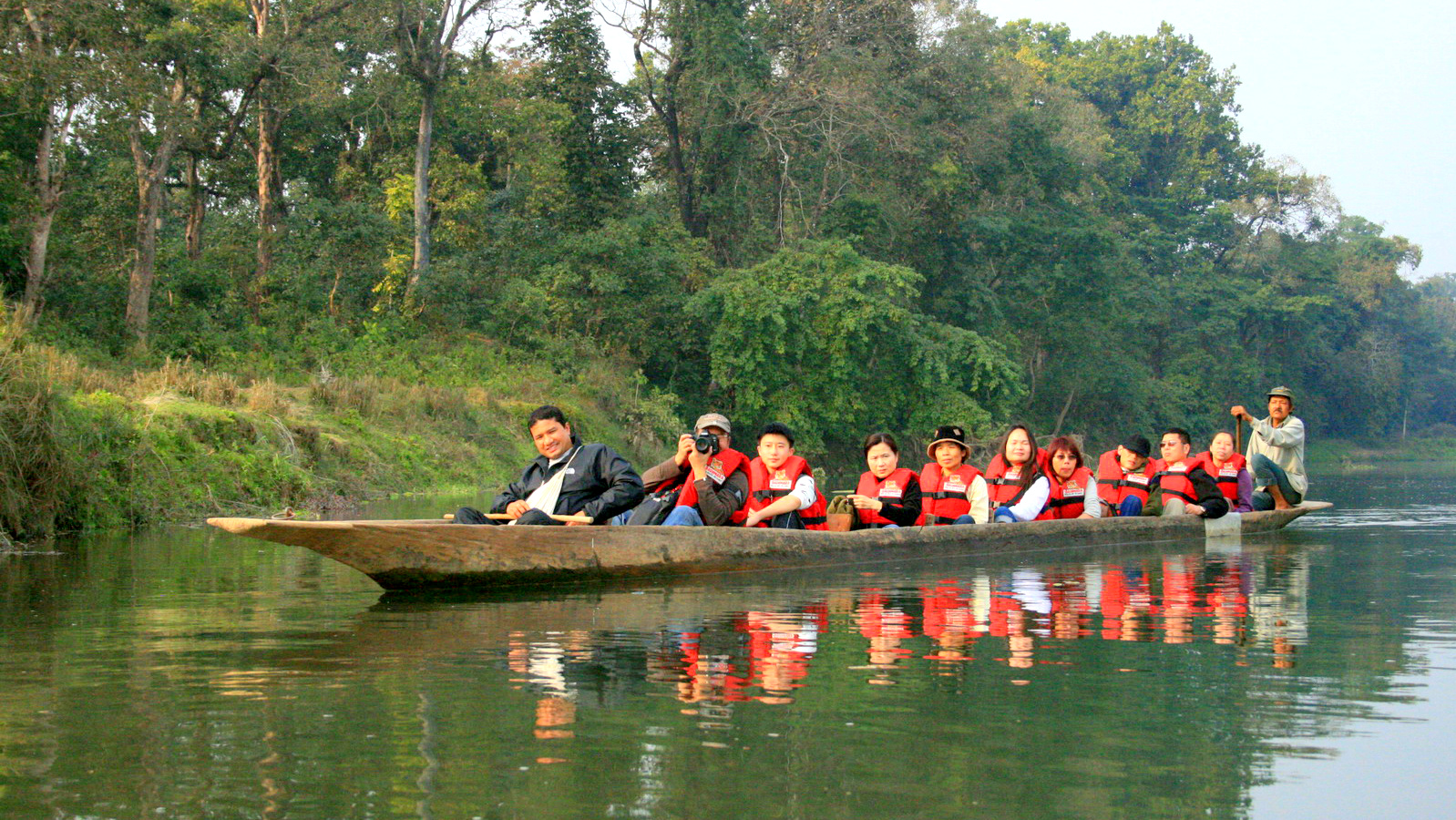
- One-Horned Rhino: Chitwan is home to a large population of the one-horned rhino, one of Nepal’s most iconic and endangered species. Safaris in the park offer a great chance to see these majestic creatures up close in their natural habitat.
- Bengal Tiger Sightings: Known for its elusive Bengal tigers, Chitwan offers one of the best chances in Nepal to spot this magnificent predator in the wild. The park's vast jungle and grassland areas provide the perfect environment for tiger sightings.
- Jeep Safaris: Jeep safaris are a popular way to explore the park's diverse landscapes, providing access to deeper areas where wildlife is often more active. The guides ensure that you have a safe and educational experience while navigating the park.
- Elephant Safari: A traditional elephant safari through the grasslands of Chitwan gives visitors a unique perspective of the park’s wildlife. You can often spot rhinos, deer, and birds from the comfort of an elephant's back.
- Birdwatching: With over 500 species of birds, including migratory birds, Chitwan National Park is a paradise for birdwatchers. It is one of the top destinations in Nepal for spotting waterfowl, herons, and kingfishers.
- Canoe Rides: The park’s canoe rides on the Rapti River offer a peaceful way to observe the wildlife. From the river, you can often spot crocodiles basking on the banks, as well as various bird species that inhabit the waterway.
- Jungle Walks: For a more immersive experience, guided jungle walks allow you to explore the park’s diverse flora and fauna on foot. An experienced naturalist often accompanies walkers to ensure safety and provide valuable insights into the ecosystem.
- Gharial Crocodiles: Chitwan is home to the rare Gharial crocodile, found in the Rapti and Narayani rivers. These long-snouted crocodiles can often be seen sunbathing along the riverbanks or gliding through the water.
- Cultural Experience: While in Chitwan, visitors can also explore the nearby Tharu villages. The Tharu people, native to the region, offer a fascinating cultural experience, and you can enjoy traditional dance performances, local cuisine, and community visits.
- Sustainable Tourism: Chitwan National Park is committed to eco-tourism, with various initiatives focused on preserving the park’s natural beauty and biodiversity. Visitors can feel confident that their visit helps support local conservation efforts.
Chitwan National Park offers one of the best jungle safari experiences in Nepal. With its vast array of wildlife, including one-horned rhinos, Bengal tigers, gharial crocodiles, and an impressive range of bird species, the park is a must-visit for nature enthusiasts and adventure seekers alike. Whether you explore by jeep safari, elephant safari, or canoe ride, Chitwan provides an immersive wildlife experience that showcases Nepal’s incredible natural heritage. It’s the perfect destination for anyone looking to explore the wilderness in its purest form.
Bardia National Park
Located in the far western region of Nepal, Bardia National Park is a wildlife haven that remains relatively untouched by mass tourism. Covering over 1,000 square kilometers of tropical forest, riverine areas, and grasslands, the park is home to an impressive range of wildlife, including the Bengal tiger, one-horned rhinoceros, and a variety of other endangered species. With its less crowded atmosphere, Bardia provides a more peaceful and immersive safari experience compared to other parks in Nepal, making it a perfect destination for nature lovers and wildlife enthusiasts.
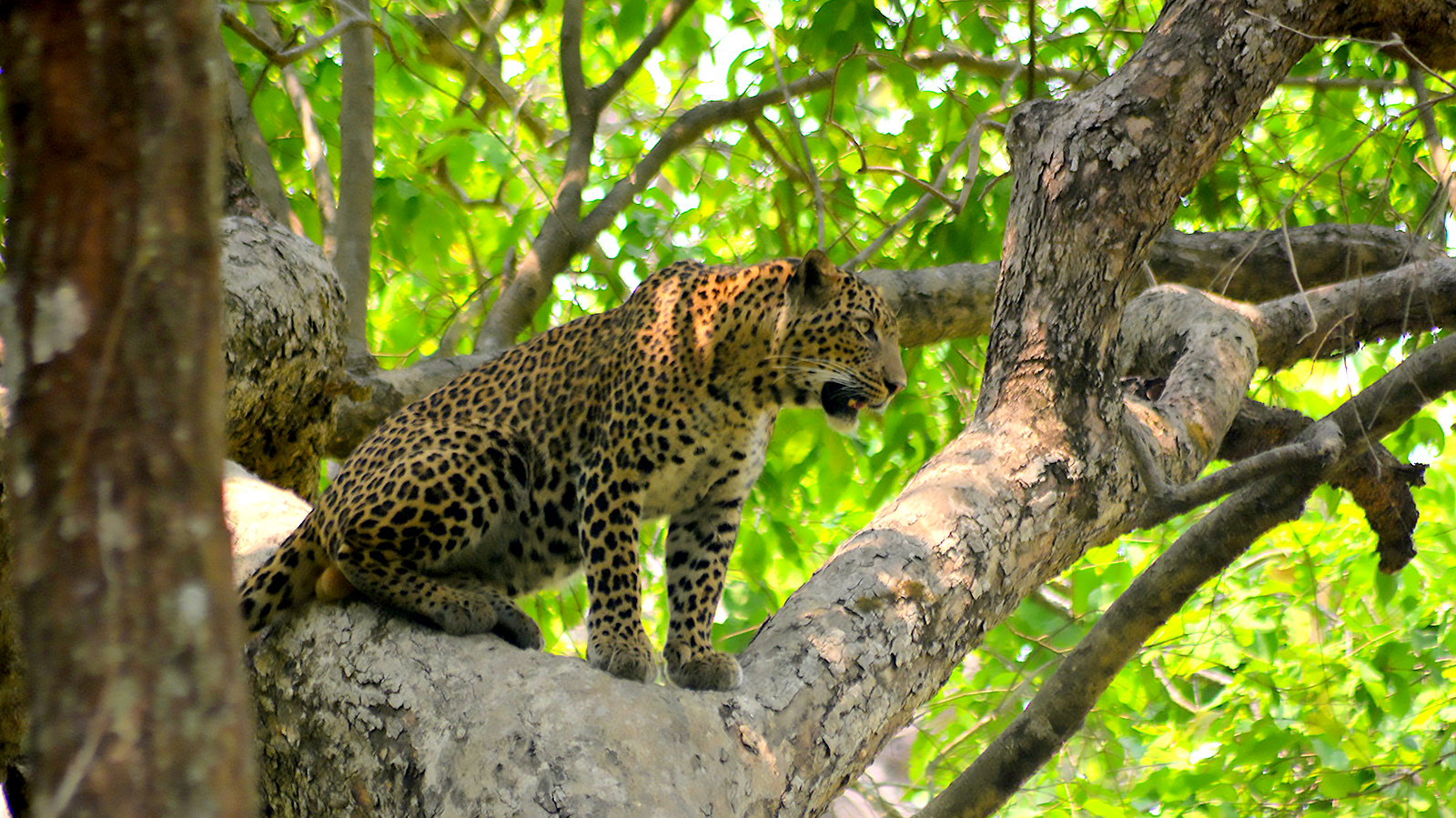
- Bengal Tiger Sightings: Bardia National Park is renowned for its healthy population of Bengal tigers. The park offers one of the best opportunities in Nepal for spotting these magnificent predators in their natural habitat, making it a favorite for wildlife photographers.
- One-Horned Rhinoceros: As a sanctuary for the endangered one-horned rhino, Bardia is a prime location for spotting these iconic animals. The park’s vast wilderness provides the rhinos with a safe and natural habitat.
- Elephant Safari: Elephant safaris in Bardia offer an exciting way to explore the park’s dense forests and open grasslands. From atop an elephant, you can encounter wildlife up close, including rhinos, deer, and wild boars.
- Jungle Walks: A guided jungle walk through Bardia’s rugged terrain offers an immersive experience, where visitors can explore the park’s flora and fauna up close. The walk is led by an experienced guide who ensures your safety and provides valuable information about the ecosystem.
- Birdwatching: With over 400 species of birds, Bardia is a birdwatching paradise. The park is home to various species of waterfowl, kingfishers, and eagles, making it a top destination for those interested in bird photography and observation.
- Wildlife Photography: The park’s rich biodiversity and dense jungles provide excellent photography opportunities, particularly for capturing tigers, rhinos, and other wildlife in their natural environments.
- Canoe Rides: A canoe ride along the Karnali River is one of the best ways to observe wildlife, such as crocodiles, water buffalo, and various bird species. It also provides a serene way to experience the natural beauty of Bardia.
- Leopard and Wild Elephant Sightings: Bardia is one of the few parks where you have a chance to see leopards and wild elephants roaming freely. The park's diverse habitats offer a great opportunity to spot these elusive animals.
- Secluded and Less Crowded: Unlike the more popular Chitwan National Park, Bardia offers a quieter and more private safari experience. It is the perfect destination for those who seek solitude in nature and prefer to explore the wilderness without large crowds.
- Local Tharu Culture: While exploring Bardia, visitors can also enjoy a cultural experience by visiting nearby Tharu villages. The local Tharu people offer insight into their traditional lifestyles, with opportunities to witness their vibrant dance performances and try their traditional cuisine.
Bardia National Park is a top destination for those seeking an off-the-beaten-path safari experience in Nepal. With its Bengal tigers, one-horned rhinos, elephant safaris, and exceptional birdwatching opportunities, Bardia offers a more intimate and peaceful wildlife experience compared to other parks in Nepal. Whether you explore the park by jeep safari, elephant safari, or canoe ride, Bardia’s rich biodiversity and serene environment make it an ideal location for nature lovers and adventure seekers alike. It’s a must-visit for anyone looking to experience Nepal’s incredible wilderness up close.
Shuklaphanta National Park
Shuklaphanta National Park, located in the far western region of Nepal, is a hidden gem for those seeking a unique jungle safari experience. This park is known for its vast grasslands, lush forests, and diverse wildlife, making it an ideal destination for nature lovers. Home to the rare swamp deer, one-horned rhinos, and a variety of other wildlife species, Shuklaphanta offers a tranquil and off-the-beaten-path safari experience. It’s less crowded than other parks, which means you can enjoy a more peaceful and undisturbed exploration of Nepal’s wild landscapes.
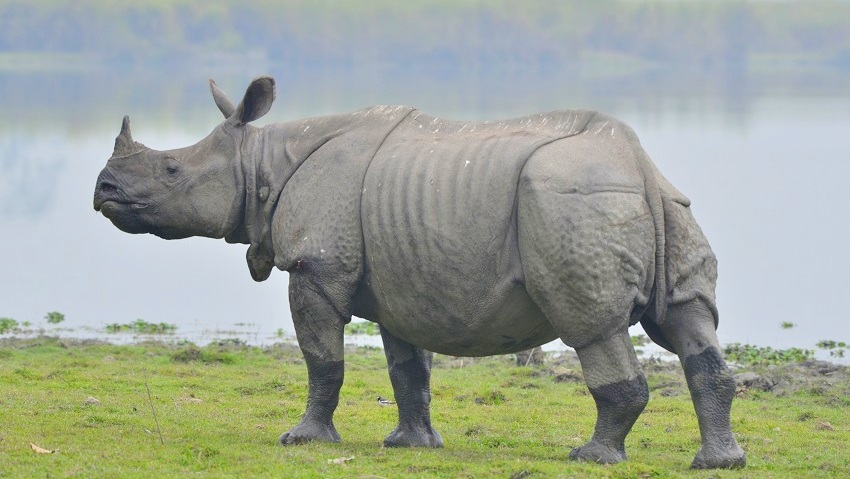
- Swamp Deer: Shuklaphanta is home to a large population of the rare swamp deer (also known as barasingha), which is one of the park's most famous residents. The sight of these magnificent creatures grazing in the park's lush grasslands is a highlight of any safari.
- One-Horned Rhinoceros: The one-horned rhinoceros is another iconic species found in Shuklaphanta. The park provides a safe and protected environment for these endangered creatures, and visitors can often spot them during a jeep safari or elephant safari.
- Elephant Safari: For an unforgettable experience, elephant safaris in Shuklaphanta offer the chance to observe wildlife from a different perspective. Elephants are used to navigate the park’s vast landscapes, providing an exciting opportunity to encounter rhinos, deer, and wild boars.
- Birdwatching: With more than 300 species of birds, Shuklaphanta is a paradise for birdwatchers. You can spot a variety of waterfowl, eagles, and kingfishers throughout the park, making it one of the top birdwatching destinations in Nepal.
- Jungle Walks: Guided jungle walks offer an immersive way to explore Shuklaphanta’s unique flora and fauna. Led by experienced naturalists, these walks allow visitors to appreciate the intricate details of the park's ecosystem while keeping an eye out for wildlife like tigers and leopards.
- Wildlife Photography: With its rich diversity of animals and birds, Shuklaphanta offers incredible wildlife photography opportunities. From swamp deer in the grasslands to wild elephants and rhinos in the forest, photographers can capture stunning images of the park's abundant wildlife.
- Canoe Rides: A canoe ride along the park’s rivers and wetlands offers a peaceful way to explore Shuklaphanta. It’s a great way to spot crocodiles, water buffalo, and a variety of bird species that inhabit the park's waterways.
- Tigers and Leopards: Shuklaphanta is one of the few places where you have a chance to see tigers and leopards in their natural habitat. The park’s diverse landscapes, including forests, grasslands, and wetlands, provide the perfect backdrop for these elusive predators.
- Seclusion and Serenity: Unlike more popular parks like Chitwan, Shuklaphanta remains less crowded, offering visitors a peaceful and secluded safari experience. It’s an ideal destination for those seeking tranquility and a more intimate encounter with nature.
- Local Culture: In addition to its natural beauty, Shuklaphanta also offers opportunities to explore the culture of the local Tharu communities. Visitors can learn about their traditional way of life, enjoy cultural performances, and taste local cuisine, providing a well-rounded experience.
Shuklaphanta National Park offers an exceptional and less crowded safari experience in Nepal. With its swamp deer, one-horned rhinos, elephant safaris, and birdwatching opportunities, it is an ideal destination for wildlife lovers and photographers seeking a more serene and immersive jungle adventure. Whether you explore the park on an elephant safari, jeep safari, or canoe ride, Shuklaphanta provides an unforgettable experience of Nepal’s rich wildlife and untouched landscapes. It’s a must-visit for anyone looking to discover the wild side of Nepal in a peaceful and tranquil setting.
Best Time for Jungle Safaris in Nepal
When planning a jungle safari in Nepal, the best time to visit largely depends on the weather, wildlife sightings, and your personal preferences for travel. Nepal experiences four distinct seasons, each offering a different experience for wildlife safaris in its renowned national parks like Chitwan, Bardia, and Shuklaphanta. Here's an overview of the four seasons and the ideal times to embark on a Nepal jungle safari tour.
Spring (March to May)
Spring is considered one of the best times for jungle safaris in Nepal. The weather is pleasantly warm, with daytime temperatures ranging from 25°C to 30°C (77°F to 86°F). The lush vegetation is in full bloom, and the park’s wildlife is highly active during this time.
- Ideal for: Viewing wildlife such as tigers, rhinos, and elephants, as they are more visible in the open grasslands.
- Key Activities: Birdwatching is at its peak, as migratory birds are in full swing. Safaris in the early mornings and evenings are particularly productive for spotting animals.
Summer (June to August)
Summer in Nepal is marked by the monsoon season, which lasts from June to August. During this time, the country experiences heavy rainfall, particularly in the lowland regions where most of the national parks are located.
- Ideal for: While safaris are still possible, the visibility is often limited due to the dense foliage and wet conditions. The Koshi Tappu Wildlife Reserve is a good alternative as it is known for birdwatching during the monsoon.
- Key Activities: Expect fewer visitors, and wildlife may be harder to spot. The parks are lush and green, and bird photography thrives in the wetter conditions.
Autumn (September to November)
Autumn is another excellent time for jungle safaris in Nepal, with clear skies and comfortable temperatures ranging between 20°C and 28°C (68°F to 82°F). This season follows the monsoon, making the landscapes lush and vibrant, and the wildlife easier to spot as they venture out in search of food.
- Ideal for: Experiencing the best wildlife safari with plenty of sightings of tigers, rhinos, and elephants. This is also a great time for wildlife photography due to the clear skies and reduced rainfall.
- Key Activities: Jeep safaris, elephant safaris, and canoe rides are all ideal during this season. The birdwatching experience is also excellent with the migration of various species.
Winter (December to February)
Winter in Nepal brings cooler temperatures, especially in the lowland regions where the safari parks are located. Daytime temperatures range from 15°C to 25°C (59°F to 77°F), and it can drop to as low as 5°C (41°F) at night. Despite the chilly mornings and evenings, winter remains one of the best times to visit for a jungle safari in Nepal.
- Ideal for: Spotting wildlife such as Bengal tigers and one-horned rhinos as they are often more active and easier to spot due to the sparse vegetation
- Key Activities: Jeep safaris and birdwatching are excellent during the winter months as the cool, dry weather makes it easier to track wildlife. It is also a great time for photography, with clear skies and crisp air.
The best time for a jungle safari in Nepal is typically during spring (March to May) and autumn (September to November), when the weather is comfortable and wildlife sightings are at their peak. Summer (June to August) can still offer some wildlife experiences, especially for birdwatching, but heavy rains can make safaris challenging. Winter (December to February) is another great option, particularly for those looking to spot more wildlife and enjoy clear skies for wildlife photography. No matter when you visit, each season offers something unique, ensuring that your Nepal jungle safari tour will be an unforgettable experience.
Packing Essentials for a Jungle Safari in Nepal
A jungle safari in Nepal is an exciting adventure that requires careful planning, especially when it comes to packing. Whether you're visiting Chitwan National Park, Bardia National Park, or Shuklaphanta National Park, having the right gear can significantly enhance your experience. From light clothing to safari essentials, here's a list of packing essentials for a jungle safari that will ensure you are prepared for all aspects of the journey.
- Comfortable Clothing: Choose lightweight, breathable clothing that is suitable for hot and humid climates. Neutral-colored clothes like khakis or earth tones are recommended to blend into the environment and not disturb the wildlife. Avoid bright colors or patterns that could attract attention.
- Sturdy Footwear: A pair of comfortable, durable shoes is essential for walking safaris and jungle treks. Hiking boots or closed-toe shoes with good grip are ideal, as they will protect your feet and provide support on uneven terrain.
- Sun Protection: The sun can be intense, especially during the day. Pack sunscreen, a wide-brimmed hat, and sunglasses to protect yourself from harmful UV rays. A UV-protective shirt or jacket is also recommended for added protection
- Insect Repellent: Insects, particularly mosquitoes, can be prevalent in jungle areas, so it's important to carry insect repellent. Opt for a product containing DEET or natural alternatives like lemongrass oil to keep bugs at bay and reduce the risk of bites.
- Binoculars: If you're a birdwatching enthusiast or simply want to observe wildlife up close, binoculars are an essential item. They will enhance your experience, allowing you to spot animals like rhinos, tigers, and birds from a distance without disturbing them.
- Camera with Extra Batteries and Memory Cards: Don't forget your camera to capture the stunning landscapes and wildlife of Nepal's national parks. Make sure to bring extra batteries and memory cards, as you’ll want to take plenty of photos during your safari tour.
- Water Bottle: Staying hydrated is crucial, especially in the hot and humid conditions of the jungle. A refillable water bottle is essential for your daily safaris. You may also want to carry a water purification tablet for emergencies.
- First Aid Kit: A basic first aid kit should include essentials like band-aids, antiseptic cream, pain relievers, and anti-diarrheal medication. It’s always wise to be prepared for minor injuries or discomforts during your jungle adventure.
- Flashlight or Headlamp: Flashlights or headlamps are essential for early morning or night-time safaris, as well as for navigating your accommodation. Make sure to bring extra batteries for your flashlight, as electricity may be limited in remote areas.
- Lightweight Backpack: A small, lightweight backpack is perfect for carrying all your essentials during safaris and nature walks. Ensure that it’s spacious enough to store water, snacks, a camera, and personal items, but compact enough to avoid being cumbersome during your activities.
Packing the right essentials for a jungle safari in Nepal is crucial to ensure a smooth, safe, and enjoyable adventure. With the right clothing, footwear, and gear, you'll be well-prepared to explore the wildlife-rich parks of Nepal, from the one-horned rhinos in Chitwan National Park to the rare swamp deer in Bardia National Park. Don’t forget to pack your insect repellent, camera, and water bottle, and always be prepared for unexpected situations with a basic first aid kit. With these essentials in tow, your Nepal safari tour will be an unforgettable journey into the heart of the jungle.
A jungle safari in Nepal offers an unparalleled opportunity to immerse yourself in the country's rich wildlife and natural beauty. Whether you're visiting the renowned Chitwan National Park, Bardia National Park, or Koshi Tappu Wildlife Reserve, each park presents unique landscapes and wildlife experiences. To ensure a smooth and enjoyable safari, packing the right essentials—like comfortable clothing, insect repellent, and a camera—is key. With proper preparation, you can focus on what matters most: experiencing the thrill of tiger safaris, spotting the majestic one-horned rhino, and capturing stunning moments of nature. Embark on your Nepal wildlife safari and make unforgettable memories while exploring some of the best national parks in Nepal.
FAQs for the Best Jungle Safari Experience in Nepal
Q: What is the best time for a jungle safari in Nepal?
A: The best time for a jungle safari in Nepal is during spring (March to May) and autumn (September to November) when the weather is pleasant, and wildlife sightings are at their peak. Winter (December to February) is also ideal for spotting animals, while the monsoon season (June to August) can be challenging due to heavy rains.
Q: Which national parks are best for jungle safaris in Nepal?
A: The top national parks for jungle safari in Nepal include Chitwan National Park, famous for one-horned rhinos and tiger safaris; Bardia National Park, known for Royal Bengal tigers; Shuklaphanta National Park, home to swamp deer and elephants; Koshi Tappu Wildlife Reserve, a paradise for birdwatching; and Parsa Wildlife Reserve, offering a remote wildlife safari experience.
Q: What wildlife can I see on a jungle safari in Nepal?
A: A Nepal wildlife safari offers sightings of one-horned rhinos, Royal Bengal tigers, Asian elephants, leopards, sloth bears, gharial crocodiles, and over 800 species of birds. The diverse landscapes provide a habitat for both rare and commonly found wildlife species.
Q: What types of jungle safari tours are available in Nepal?
A: Various Nepal jungle safari tours are available, including jeep safaris, which cover large areas efficiently; elephant safaris, providing a traditional and elevated view of the jungle; canoe rides, perfect for spotting aquatic wildlife; and walking safaris, ideal for birdwatching and experiencing the jungle up close.
Q: Is a jungle safari in Nepal safe?
A: Yes, jungle safaris in Nepal are safe when accompanied by experienced guides. It is essential to follow safety instructions, maintain silence during safaris, and avoid sudden movements to ensure a smooth and risk-free wildlife safari experience.
Q: What should I pack for a jungle safari in Nepal?
A: Packing essentials for a jungle safari include light, breathable clothing in neutral colors, sturdy hiking shoes, binoculars for wildlife spotting, sunscreen, a hat, sunglasses, insect repellent, a camera with extra batteries, and a refillable water bottle. Proper preparation enhances the safari experience and ensures comfort in the jungle.
Q: How long does a typical jungle safari in Nepal last?
A: Nepal safari tour packages range from half-day excursions to multi-day experiences. Most travelers opt for two to three-day safari tours to increase the chances of spotting wildlife and fully explore the best national parks in Nepal.
Q: Can I do a private jungle safari in Nepal?
A: Yes, private Nepal jungle safari tours are available and can be customized according to personal preferences. Luxury options include exclusive jeep safaris, private wildlife guides, and high-end accommodations near national parks.
Q: What is the cost of a jungle safari in Nepal?
A: The cost of a jungle safari in Nepal varies depending on location, duration, and type of safari. Budget-friendly options start at $50-$100 per person, while luxury safari packages with premium services can cost $500 or more.
Q: How do I book a jungle safari in Nepal?
A: Booking a Nepal wildlife safari is easy through Druk Holidays, which offers expert-guided safari tours to Chitwan, Bardia, Koshi Tappu, and other top wildlife destinations in Nepal.



